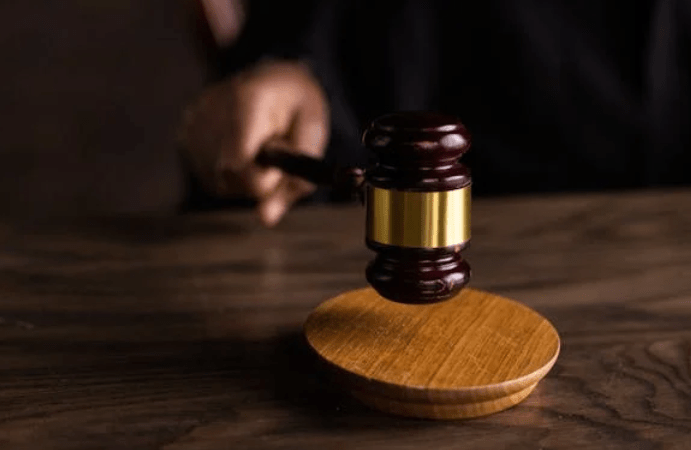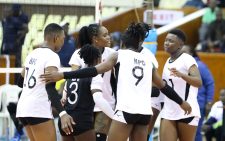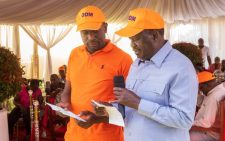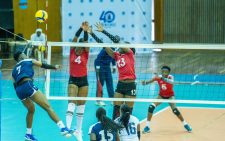The dark side of life as an intersex in Kenya

John (who sought anonymity for fear of backlash from society, had a troubled childhood. He spent much of his childhood literally hiding from questions whose answers he lacked, and judgment from his peers, relatives, neighbors, the community and most painfully, from himself.
“Growing up, I always felt different, but I never had the words to describe why,” says John, the Kisii County resident who is now 35-years-old.
His parents and even the doctors were confused about his body’s intersex features. Some said he would “grow out of it.” Others suggested surgery without fully explaining what was happening to him.
The first time he tried to access sexual reproductive and health rights services (SRHR), he experienced one of the most humiliating time of his life. While visiting a health facility, he was reluctant in filling out the patient form given to him to fill in his personal details, and especially on the gender section. The nurses could not understand his reluctance.
“When I explained my situation, she frowned and whispered something to her colleague. Soon, a small group of nurses and interns had gathered, staring at me as if I was an exhibit in a science laboratory,” he says ruefully.
He could not bear the humiliation and left before he could be attended to.
Not isolated cases
Since then, trauma from that incident and unending stigma and discrimination have followed John like a shadow.
“Some doctors insist that I should “pick a side”, as if gender is something you select like groceries in a market,” he says. Worse still, others suggests unnecessary medical procedures without considering his feelings or long-term health implications.
“Even routine check-ups feel like interrogations. Every visit to a hospital is a reminder that the healthcare system is not built for people like me,” he says.
Some doctors and nurses in medical facilities John has visited around his home area have even advised him to seek treatment in Nairobi, over 30km away, because they do not handle such cases. Such proposals are given without a care of whether he can afford to travel to Kenya’s capital city or not.
“The stress and anxiety have affected my ability to work, build relationships, and even dream of a future where I do not have to fight for basic dignity,” John explains.
John says there are essential SRHR services such as counseling, hormonal therapy, and basic reproductive health education, which he and other intersex people desperately need but cannot access. “They are either unavailable or come with judgmental stares and whispers,” he says.
John says Kenyans need to understand that intersex persons are human and need the love, care and understanding of society. Similarly, Mary faced this confusion and secrecy when she welcomed her first child. When she first held her newborn baby, she was overwhelmed with joy. The joy would soon turn into confusion when doctors hesitated to assign a gender to her child.
“I was told that my baby had ambiguous genitalia, and more tests were needed,” she notes as she remembers the beginning of her long emotional journey; one filled with medical consultations, societal stigma, and the struggle to understand what it meant to raise an intersex child.
She adds “The doctors suggested immediate surgery to ‘fix’ my child, but I was not sure if that was the right decision.”
Included in the census
Like many parents, she faced immense pressure from medical professionals to make life-altering choices without fully understanding their long-term consequences.
Medical experts often provide conflicting advice, leaving parents feeling lost and confused. In 2019, the Kenya National Bureau of Statistics (KNBS) census documented 1,524 intersex persons in the country. Among the 47 counties, Nairobi County had the highest population of intersex people at 245 followed by Kiambu County with 135 and Nakuru’s 95. Though not ranking highly as these top three, the census showed that Kisii County in Western side of Kenya had 38 intersex cases, including a seven-month-old.
However, different human rights organisations give a higher number of intersex. Child Rights International Network estimates that there is close to 20,000 intersex persons, while the Kenya National Commission on Human Rights (KNCHR) provides an even higher figure, at 1.4 million intersex persons in the country.
Frankline Robert Kibagendi of the Intersex Kenya Education and Advocacy group, however says, Kenya lacks comprehensive data on intersex persons, making it difficult to advocate for proper policies and support systems.
“We are trying to see how we can gather data and conduct research. The last national census recorded 1,524 intersex persons, but no one has done any follow-up research to understand their challenges,” Kibagendi explains. He observes that conversations involving sexual reproductive rights in Kenya often focus only on women without recognising it touches on all genders.
Societal expectations
He emphasises that intersex individuals, like everyone else, require comprehensive sexual and reproductive health education and services. “Limited awareness within communities and among service providers continue to be a major barrier,” he adds.
In most parts of rural Africa where sexual and reproductive health education is limited, Kibagendi says intersex persons suffer even more due to deep-rooted cultural and religious beliefs.
“A wide section of society is unaware of what it means to be intersex, leading to misconceptions, stigma, and even violence,” he argues.
The parents are assailed daily by societal stigma and fear of them, and their children being rejected by their relatives and the community.
For generations, intersex individuals, known in the Kisii community as “Ekerina,” were often hidden by their families due to fear, stigma, and cultural misconceptions.
Many believed that having an intersex child was a bad omen or a curse, leading to secrecy and isolation.
Samwel Bosire, Secretary General of the Abagusii Council of Elders, says that even though these beliefs were not accurate, families would dress their intersex children in a way that made it difficult for others to determine their gender.
“This was a way of protecting them from scrutiny and ensuring their safety,” he says.
But some families embraced these children and were seen as special and were given important roles in the society. “Some became prophets, rainmakers and spiritual figures performing sacred rituals. They were also known for crafting shields (known as Ebiranya in Kisii), which were believed to protect communities from enemies,” says Bosire.
Their presence in a household was considered to be a sign of good fortune. If an intersex individual visited someone’s home, it was customary for the host to give them a goat or a hen as a token of respect and gratitude.
“Culture has made efforts to promote inclusivity, recognising and respecting all individuals, regardless of their identity. However, stigma still lingers, forcing many intersex persons to live in secrecy, afraid of rejection or being labeled as cursed,” says Bosire.
The struggles
One of the least discussed challenges facing intersex persons, including students, revolves around menstrual hygiene.
Kibagendi says there is no mainstream knowledge or institutional support regarding menstrual products designed specifically for intersex bodies.
“It has been a daily struggle for me in my efforts to introduce reusable sanitary towels for intersex persons,” he says, noting that intersex students in schools across the country face the same menstrual challenges as their peers, without the proper resources or guidance on how to manage them.
“These products are extremely expensive and nearly impossible to find,” he says. While the Government of Kenya now allows intersex children to be officially recorded as intersex at birth, the healthcare system still does not recognise or understand intersex identities.
This lack of awareness translates into poor medical services and in some cases, harmful practices.
Kibagendi says that, even though the national medical guidelines exist to standardise intersex care in hospitals, their enforcement is weak.
“The quality of care and reporting remains inconsistent, leaving many intersex individuals vulnerable to medical malpractice or neglect,” he says.
Law and reforms
Dennis Anyoka, an advocate of the High Court of Kenya, says the country has made significant strides in recognising and protecting the rights of intersex individuals, particularly concerning access to healthcare.
Article 27 of Kenya’s Constitution guarantees equality and freedom from discrimination for every individual.
“Although it does not explicitly mention intersex persons, the provisions against discrimination based on sex have been interpreted to encompass intersex individuals, ensuring their right to equitable healthcare access,” he says.
The Children’s Act of 2022 recognises intersex as a third gender, making Kenya the first African country to grant this legal recognition. It mandates equal access to essential services, including healthcare, for intersex children. “However, intersex individuals nationwide have faced challenges related to healthcare access and discrimination,” says Anyoka.
Anyoka says there is a need for the establishment of specific protocols for the treatment and care of intersex individuals to address their unique healthcare needs.
In addition, the government should develop and enforce policies that explicitly recognise and protect intersex individuals’ rights within healthcare systems.
Kisii’s CEC for health, Ronald Nyakweba, acknowledges that Kenya has made significant strides in recognising and addressing the needs of intersex individuals. He cites the National Reproductive Health Policy 2022-2032 policy that aims to ensure that intersex individuals attain the highest standard of reproductive health.
Nyakweba says the Intersex Persons Bill of 2024 seeks to enhance the protection and rights of intersex persons in Kenya. Once enacted into law, the Bill will give intersex persons legal recognition, protection and promotion of their human rights and fundamental freedoms contemplated in the Constitution. This way, they will have full access to justice, security, health, employment, information and education.
A 2018 taskforce report highlighted that many intersex individuals face challenges in accessing healthcare due to a lack of knowledgeable professionals and the high cost of treatment.
Nyakweba admits that specific data on resource allocation by the Kisii and Nyamira county governments for intersex healthcare is not readily available.
“However, national initiatives, such as the inclusion of intersex persons in the 2019 census, indicate a growing recognition that may influence county-level resource distribution,” says Nyakweba.














